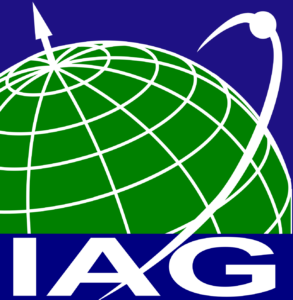JWG 1.4.3: Consistent realization of TRF, CRF and EOP (joint with IAU Commission A2 and IERS)
Chair: Robert Heinkelmann (Germany)
Vice-Chair: Manuela Seitz (Germany)
Terms of Reference
Many applications, e.g. in geodesy, astronomy, or navigation, rely on the consistency between terrestrial (TRF) and celestial (CRF) reference frames and Earth Orientation Parameters (EOP). The EOP connect the CRF and TRF in terms of their orientation and rotation differences. The EOP can only be considered as physically meaningful when determined consistently with the reference frames. The quality requirements for the applications including societal contributions were uantified through the GGOS as 1 mm accuracy and 0.1 mm/yr stability, i.e. about 33 μas and 3.3 μas/yr in terms of EOP. For Earth system science based on EOP the consistency is a crucial characteristic.
Today, the quality requirements for reference frames and EOP are not met.
Data and model inconsistency. Currently, TRF and CRF are determined independently of each other. Individual Working Groups (CRF) or Combination Centers (TRF) compute the frames through reprocessing/combination efforts every five to ten years. The releases of the terrestrial and celestial frames do not happen at the same time. In this way, the frames are computed based on different input data and on different analysis models in case of updates of the conventional models. Following independent approaches, the consistency of a new release of one of the frames can only be quantified and thus ensured to the last release of the respective other frame. If the frames are not fully consistent, the EOP based on these frames cannot be consistent.
Multi-technique vs. single technique analysis. DORIS, GNSS, SLR and VLBI observations are combined with local tie vectors at co-location sites for the TRF computation, whereas the CRF is directly connected to the TRF through VLBI alone. This situation does not change when applying alternative data analysis procedures. Nevertheless,as VLBI networks are sparse in comparison to multi-technique networks, it has been shown that the terrestrial part of the Earth orientation significantly improves through the combination with satellite-based data. The celestial parts of Earth orientation, dUT1 (UT1 ∼ ERA) and CPO, determined by VLBI observations only – and possibly by LLR data –, can in turn improve due to correlations between the EOP within the VLBI data analysis. CRF realizations in other wavelengths are aligned to the X/S VLBI CRF and thus do not contribute to the CRF orientation for ICRF3.
Nevertheless, they permit an independent validation. Apart from the rotation and spin, catalogues based on Gaia (optical) data releases can provide independent insight into deformations and other technique-dependent systematic errors and thus present another independent validation for the VLBI-based CRF.
Prediction problem. The reference frames and the EOP are customarily applied in prediction mode, e.g. for geodetic and astrometric data analyses. Accordingly, values have to be given beyond the data time-span considered for the reference frame realization. As long as no significant non-linearity occurs, the global coordinates can be used very well for predicting the position into the future. For most applications, predicted EOP have to be available as well. These predicted EOP require consistency to the frames and to the reprocessed EOP at the same time. It is impossible to fulfill both requirements when new reference frame releases become available.
Objectives
Addressing the above-mentioned issues, the WG will:
- compute multi-technique CRF-TRF solutions together with EOP in one step, which will serve as a basis to quantify the consistency of the current conventional reference frames and EOP as well as the consistency of reprocessed and predicted EOP;
- investigate the impact of different analysis options, model choices and combination strategies on the consistency between TRF, CRF and EOP;
- study the differences between multi-technique and VLBI-only solutions;
- study the differences between VLBI solutions at different radio wavelengths;
- study the differences between Gaia (optical) and VLBI (radio) reference frames;
- study the effects on the results, when different data time spans are considered;
- compare the practically achievable consistency with the quality requirements theoretically addressed by the GGOS;
- derive conclusions about future observing systems or analysis procedures in case the quality requirements cannot be met with the current infrastructure and approaches.
Members preliminary
- Robert Heinkelmann (Germany); Chair
- Manuela Seiz (Germany); Vice-Chair
- Maria Karbon (Spain)
- Tobias Nilsson (Sweden)
- Minghui Xu (Gernamy)



